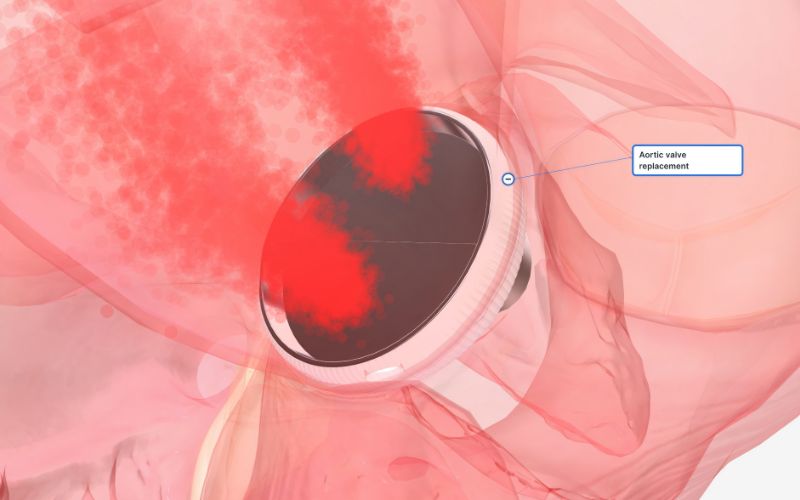The aortic valve is one of the four heart valves connecting the left ventricle to the aorta. It controls blood flow in the heart, i.e., when the aortic valve opens, it allows the blood to flow from the left ventricle to the aorta. And when it closes, the valve prevents oxygen-rich blood from flowing back into the heart. The doctor may recommend a replacement surgery if the aortic valve is narrowed (stenosis) or leaking (regurgitation).
There are several age-related, lifestyle-related, and congenital reasons for aortic valve diseases. Not everyone needs heart valve replacement surgery. If you’ve been suggested one, read on to learn more about the procedure. And if you are looking for a heart specialist in Nagercoil for consultation, visit Calwin Hospitals.
What Is Aortic Valve Replacement Surgery?
Aortic valve replacement surgery is suggested when the doctor determines that repairing it is not feasible (probably due to multiple complications) or the repaired valve won’t last long.
There are two types of aortic valve replacement surgeries,
- SAVR or Surgical Aortic Valve Replacement
- TAVR or Transcatheter Aortic Valve Replacement
SAVR is an open-chest surgery when physicians make an incision in the chest to remove the damaged valve and replace it with a new valve. The entire process takes around two to four hours, and recovery takes around three to four months, including initial recovery and cardiac rehab. A few decades ago, SAVR was the norm and suggested for all patients with aortic valve damage or disease. Today, the procedure is considered for patients with asymptomatic patients who are at low risk for an open-chest procedure.
TAVR is a minimally invasive procedure that involves inserting a catheter into the artery to deliver the new valve safely inside the old one. The catheter is inserted through the upper thigh and guided to the artery for the procedure. The old valve is pushed aside and placed behind the new valve. The entire process takes around 2 to 4 hours, followed by a month of rest to ensure complete recovery. In fact, most patients can return to work 30 days after surgery.

TAVR Vs. SAVR | When Is TAVR Recommended?
SAVR is a surgery, while TAVR is a procedure. The latter is recommended for people at risk for open heart surgery. The doctor may also consider the size of your aortic valve and blood vessels. For instance, if the valves are heavily calcified, the doctor may recommend TAVR.
Similarly, in patients with coronary artery diseases or multi-valve diseases, the doctor may recommend SAVR. TAVR is suggested for older patients because the lifetime of a tissue valve is around 15 years. However, TAVR is not recommended for everyone. If your damaged valve has two leaflets instead of three or has a condition of aneurysm, TAVR isn’t recommended. Patients with a valve infection or valve leakage must not undergo TAVR.
What Are the Different Types of Valves?
There are two types of TAVR valves, balloon-expandable valves, and self-expanding valves. Balloon-expanded valves have leaflets inside the stent frame, and the valve is crimped onto the balloon. Self-expanding valves are made of nitinol when it rises to the temperature of the blood, it expands on its own beyond its original size.
There are two types of SAVR valves, Biological Valves and Mechanical Valves. Biological valves are made using the tissues of cows and pigs. Mechanical valves are made of carbon and steel but carry the risk of blood clots when compared to biological valves.
While each of these valves has its pros and cons, the surgeon may recommend a valve depending on your condition, age, and other related factors.
What Does the Success of An Aortic Valve Replacement Surgery?
Aortic valve replacement surgery is a reasonably safe procedure. The post-operation life expectancy of patients with aortic valve replacement surgery is an average of 16 years for people aged 65 or less and between 6 to 7 years for people over 75 years.
Biological valves are relatively safe and have a life expectancy of 94% after 10 years. After 20 years, this number drastically reduces, with 48% of valves deteriorating. Mechanical valves last longer comparatively but have a higher risk of blood clots or blocked veins.
What Are the Risks of Aortic Valve Replacement Surgery?
As with any other surgery, there are risks associated with valve replacement. These risks depend on your general health and the health of your heart. Some of the risks include infections, bleeding, blood clots, cardiac arrhythmia, kidney problems, and stroke.
TAVR is a safer procedure when compared to SAVR as it is minimally invasive and does not involve an open-chest surgery. It is, therefore, a viable option for the elderly, especially those over TAVR.
What Happens After Aortic Valve Replacement Surgery?
While heart valve replacement surgery takes around two to five hours, recovery takes about 2 to 3 months. For the first few weeks, you’ll be asked to be on complete rest as you are likely to get tired quickly. You must avoid driving and other physical activities during this time. You can move around during the first six to eight years, but avoid carrying heavy weights.
You must contact your doctor if you experience fever, chest pain, or unusually gaining weight.
What To Look for When Choosing a Heart Specialist?
Look for a heart hospital that uses advanced operating techniques and the latest research on cardiac problems. Visit Calwin Hospitals if you are looking for a heart hospital in Nagercoil. We are a multispecialty hospital in Nagercoil with dedicated cardiology, ophthalmology, diabetology, and nephrology departments.
